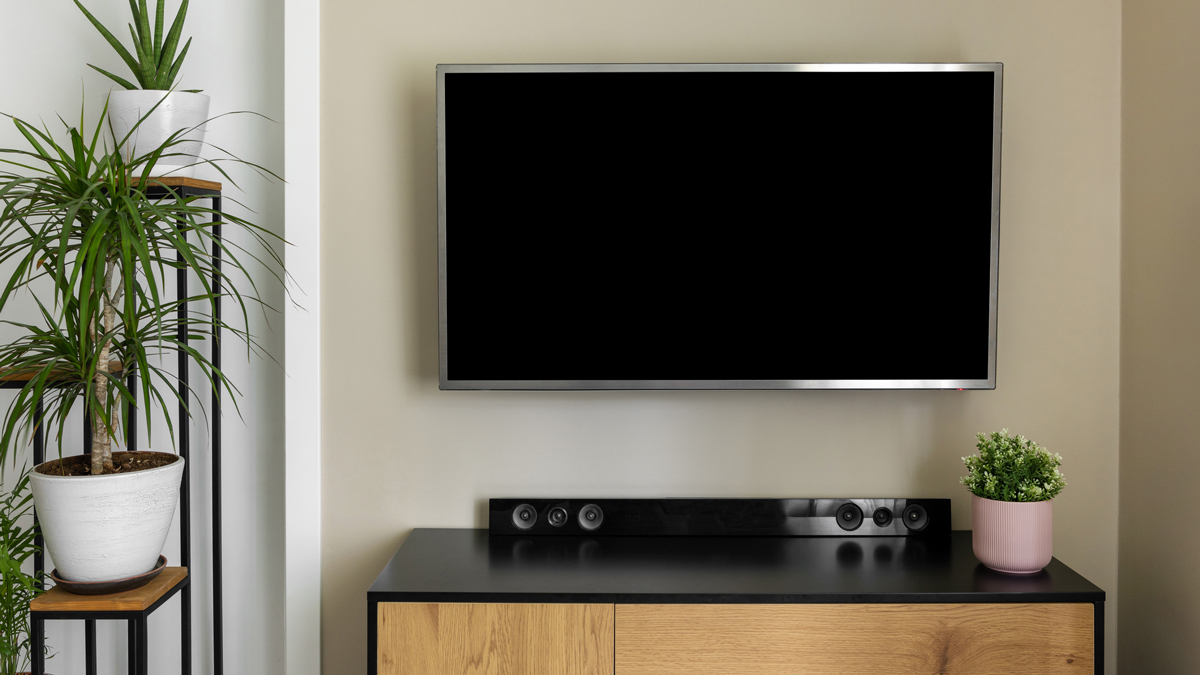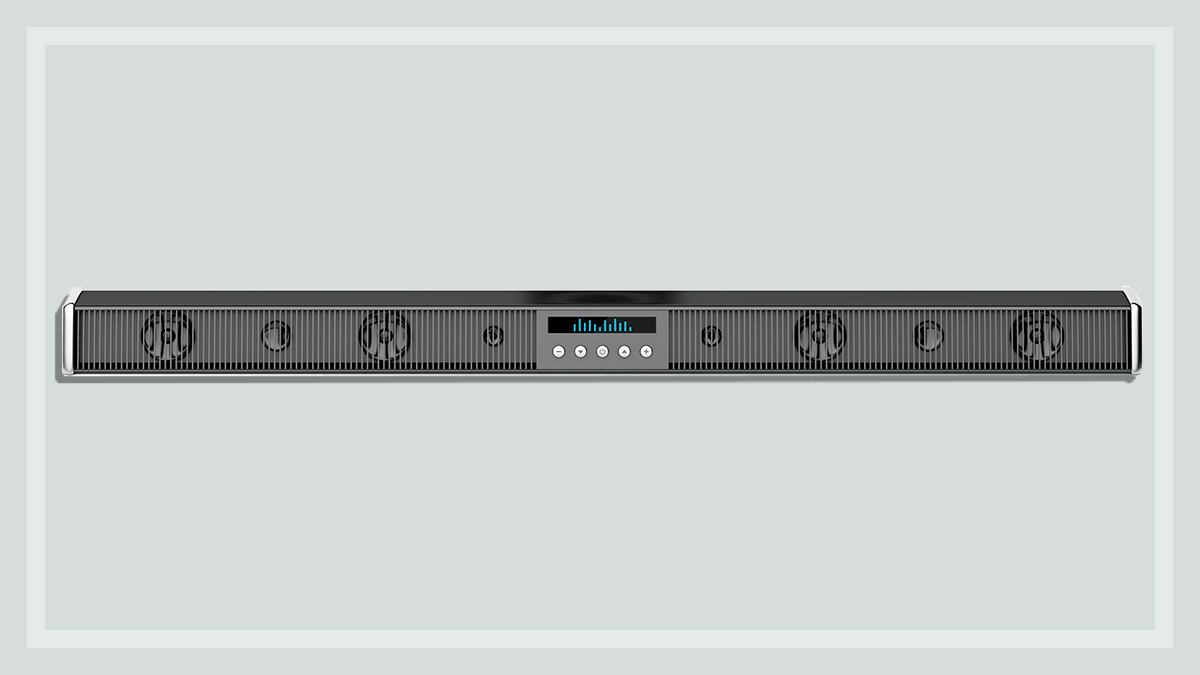Get our independent lab tests, expert reviews and honest advice.
Is it worth getting a soundbar?

Need to know
- Most TVs will enjoy better sound with a soundbar
- A soundbar can be connected to your TV in seconds, and it can also be used as a home wireless speaker
- You can get a great soundbar for under $300 – much less than you'd pay for a surround sound system (or a better sounding TV)
On this page:
- What is a soundbar?
- Why you might want a soundbar
- Why you might not want a soundbar
- How to connect your soundbar
If you want to improve your TV’s audio quality without a multi-speaker set-up, a soundbar offers an instant plug-and-play improvement.
You can even enjoy your soundbar when the TV is off, using it as a home wireless speaker. But there are some things to consider if you want to get the best out of your home entertainment system.
What is a soundbar?
A soundbar is basically a single long box containing several speakers, designed to sit just below your TV screen and give your home viewing experience an audio boost.
Most soundbars can’t deliver the same sound quality as a dedicated multi-speaker set-up, but many get close enough for the average set of ears. They also take up less room than a multi-speaker set-up, and there’s a lot of choice in size and price points.
The good news for owners of TVs with poor sound is that you’ll love the improvement in audio you get for a reasonable price.
If you have a TV with OK sound but lacking that extra punch you want when watching movies, then adding a soundbar to the mix will give you a better home cinema experience without the hassle and cost of installing a dedicated home theatre system.
Cost
So, what do we mean by ‘reasonable price’? In our latest review, soundbars range in price from $159 up to $3999.
CHOICE members can check our soundbar reviews to see which models actually perform well, but rest assured, there are recommended models for under $300.
Why you might want a soundbar
1. Your TV has crummy sound
Director George Lucas once said, “Sound is 50% of the moviegoing experience”. But sometimes TV manufacturers treat sound as an afterthought.
If you have a TV with OK video but horrible audio quality, adding a soundbar will make all the difference to your complete watching experience.
Also, most TVs when connected to the soundbar will turn off the TV speaker by default, making it even easier to switch to better sound.
2. You own a projector
Projectors are really the only way to get a display size greater than 90 inches, but most of these devices require separate audio, or the audio provided with the projector is in no way cinema quality.
If you have the projector as part of a big installation, then it may be worth investing in a dedicated multi-speaker set-up.
But if your projector’s display can be wound up and put away so you can use the room for other activities, then a good quality soundbar would be the perfect discreet audio solution. And as a bonus, when the projector is off and the display put away, you have a great wireless speaker to fill the room with music (see next point).
3. You’ll also enjoy using the soundbar as a wireless speaker
Soundbars can be a versatile home entertainment device to have in your home. Not only will they improve the audio quality of your TV, they can also be used as a powerful wireless home speaker.
Most soundbars have support for Bluetooth, allowing you to stream whatever music you listen to on your smartphone directly to the soundbar.
Built-in streaming services such as Spotify and Tidal can be handy to stream directly from the cloud via Wi-Fi. This can improve audio quality and allow you to listen to music using the remote control without the need for a smart device.
CHOICE tip: If you’ve decided to upgrade your TV’s soundbar to something more powerful, your old soundbar might find a second life as a speaker in the kids’ playroom or study.
Why you might not want a soundbar
While a soundbar will improve the audio experience in most cases with little hassle and not much extra expense, there are times when it’s not the automatic choice.
1. You need true cinema audio
Sometimes a TV can be too large for a soundbar to be a good option, particularly if you have a high quality TV situated in a room that serves as a dedicated ‘movie room’.
Although some soundbars support the latest immersive audio technologies, such as Dolby Atmos and DTS-X, you won’t get the best out of these audio formats without true speaker separation throughout the room.
If you have a large area and want the full cinema experience, it may be worth considering a multi-speaker set-up.
2. Audio quality just isn’t that important to you
At the other end of the scale, a small TV in the study, kitchen or other area of the house where audio is not a high priority would not require a soundbar as it would only get in the way.
If the audio is particularly bad, it may be worth the effort to make the adjustments on the TV’s audio settings to get the best possible sound reproduction for voice, as this is most likely what you’ll be wanting to hear clearly in the background while going about your day-to-day tasks.
3. You’re hard of hearing
CHOICE members often ask about the settings for closed captions (CC) on a TV. This feature provides onscreen text for the spoken words and to describe the audio. For example, along with the dialogue, CC will also indicate someone scoffing in the background, a siren going in the distance or the cheering or a murmur of dissent in a crowd.
These textual elements are crucial for hard of hearing or deaf viewers to fully enjoy the video experience.
If you find you like to have CC on by default when you’re watching a movie, then a soundbar may not be for you, unless there are other people in your household who would benefit from one.
How to connect your soundbar
Most soundbars support these common cable formats for connecting to your TV:
- HDMI
- Optical (aka TOSLINK or digital RCA)
- RCA (the red and white stereo cables).
HDMI is the best cable option as it has enough bandwidth to support the highest quality audio currently available.
Optical is fine, but it can’t transmit high-quality audio like HDMI. It also caps out at 5.1 surround channels (for the standard set-up of five speakers and one subwoofer), so you won’t hear the added surround effects offered by 7.1, Atmos and DTS-X soundbars.
RCA does the job but soundbars only support it in the stereo configuration, so no surround sound. For most cases it should only be used as a last resort, but it may be better for listening to voice and less complex audio.
If you have other devices that play audio, such as a game console or Blu-ray player, for most situations you’re best off plugging these directly into the TV, so that all audio goes into the TV and out through the soundbar.
Read more about how to get the best sound out of a soundbar.
Common audio inputs
The main wired and wireless inputs and symbols that you’ll find on your television and soundbar, depending on the model.
Auxiliary – single input.
RCA – left and right inputs, often red and white.
Optical, also known as TOSLINK.
HDMI.
Bluetooth.
Wi-Fi.
Working with ARC
The audio return channel (ARC) is a handy two-way communication of audio between your TV and soundbar.
While it looks like any other HDMI connection, it can play any audio being shown on the TV, whether it be live TV, video from a game console, or streaming audio from Spotify or Netflix.
ARC also allows the user to control multiple devices connected to the TV via one remote control.
The original version of ARC delivers 5.1 surround sound, including compressed Dolby and DTS.
The newer enhanced audio return channel (eARC) supports additional bandwidth for uncompressed 5.1 and 7.1 surround sound, as well as Dolby Atmos and DTS-X object-based surround sound.
Both the TV and the soundbar need ARC or eARC in order for the ‘handshake’ to work. If this is available on your TV and soundbar then we recommend you use it, as you’ll get the best audio experience.
If your TV is older or doesn’t support ARC, you’ll need to use the optical port if you want audio from your other devices (such as the game console or Blu-ray) to come through the soundbar. This is often called TOSLINK, depending on the manufacturer.
Like HDMI, all you need to do is plug it in. If neither option is available, you can use RCA – and start looking for a new TV, as it’s probably time for an upgrade.






